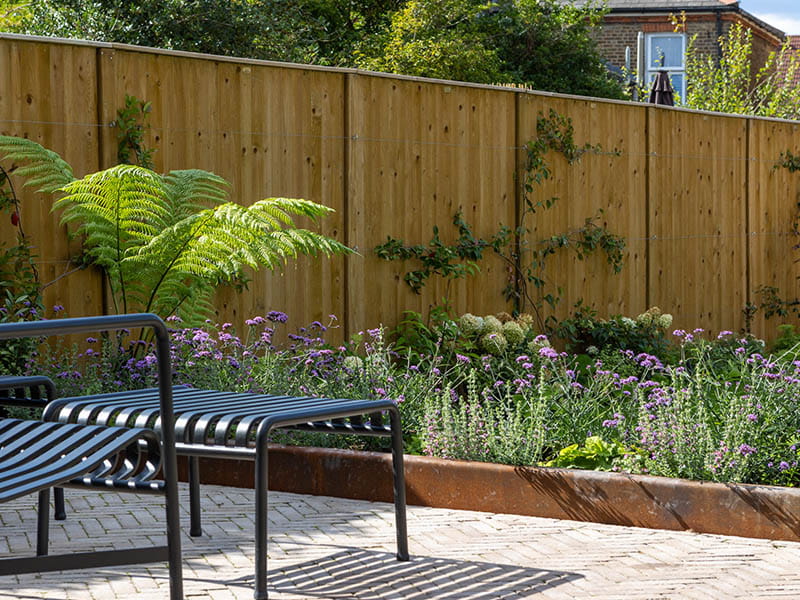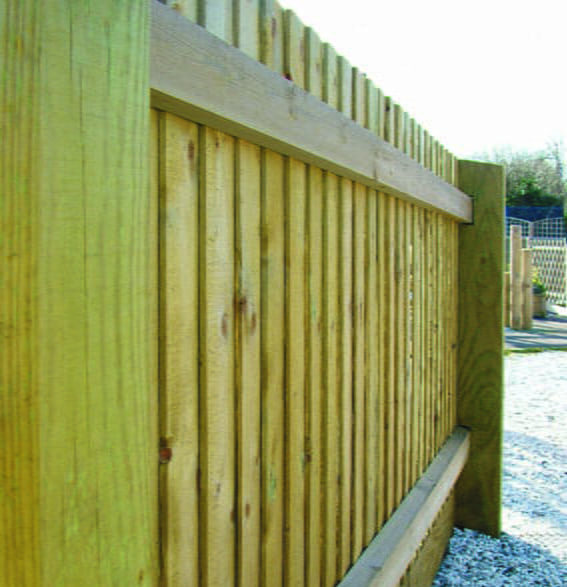15/07/2025 12:00 AM
Are All Closeboard Fence Panels the Same?
Closeboard fence panels, also commonly known as Featheredge or Featherboard panels, are one of the most popular fencing styles in the UK.
Strong, smart-looking, and highly versatile, they’re a go-to choice for many homeowners and professionals. But if you think all Closeboard panels are made the same, think again.

The Simple Answer: No, they are not the same
Not all Closeboard panels are equal. While they may look similar from a distance, the quality, construction, and materials can vary significantly. These differences have a big impact on how long the fence will last, how well it performs, and how it looks over time.
What Makes Closeboard Fence Panels Different?
- Number and Quality of Rails
Some panels use just two horizontal rails. Better quality panels will use three or more, often with the top rail being weathered to help shed water and reduce the chance of rot.
For example, our Closeboard Panels feature heavy duty, weathered rails designed to support the structure and prolong the life of the panel. A weathered rail is angled to allow water to run off, preventing water pooling and causing damage to the wood.

- Pale Thickness and Overlap
One of the most overlooked but important differences is the thickness of the featheredge pales. Thicker pales are more durable and resist warping or splitting. The overlap between pales also matters. A narrow overlap can result in gaps once the timber dries out, which affects privacy and appearance. Quality Closeboard panels have a generous overlap to avoid this issue.
Our closeboard pales overlap by 20mm giving sufficient compensation for any movement in the timber. Our pales are also 22mm thick at their widest point.
- Timber Quality
Better quality fence panels are made using specific species of trees, from well managed forests. Lower quality panels might save money upfront but are more prone to splitting and weather damage. Premium panels also feel heavier and sturdier.
- Fixings
Look out for panels that use stainless steel or galvanised fixings. These reduce the risk of unsightly rust stains and structural weakening over time. Cheaper panels may use mild steel nails which corrode quickly when exposed to the elements.
- Treatment and Guarantee
Arguably one of the most important factors is how the timber is treated. Fence panels that are pressure treated and come with a long guarantee (such as 25 years) offer much better long-term value. Proper treatment protects against rot, fungal decay, and insect attack. Some panels are only dip-treated, which offers far less protection. Without a guarantee, you’re left to fork out the cost of replacement fencing when it inevitably fails.
So, are all Closeboard fence panels the same? Absolutely not. What you’re really paying for is longevity, structural strength, and peace of mind. Choosing panels built with better timber, stronger construction, and backed by proper treatment will always pay off in the long run.

Different forms of closeboard – panel and kit form
Closeboard can be supplied in panel form (premade by the manufacturer) or in kit form to be assembled on site. Both options offer the classic, robust appearance associated with closeboard fencing, but there are subtle differences in finish and installation that affect the overall look.
Closeboard Panels
Premade closeboard fence panels are manufactured in standard sizes and installed between slotted fence posts, usually made from timber or concrete. The panels themselves provide a uniform appearance with evenly spaced featheredge boards fixed to horizontal rails. Because the panels fit between posts, the posts remain visible from both sides of the fence, creating a more segmented appearance. This can suit contemporary or more structured garden layouts.

Kit Form Closeboard
In kit form, closeboard fencing is built on site using individual components, typically comprising featheredge boards, arris rails, gravel boards, and notched or morticed posts. This method allows for a seamless run of fencing where the boards can overlap the posts, meaning the posts are often hidden from view on one side, giving a more continuous, traditional finish. Kit form fencing is especially useful for sloping gardens or irregular boundaries, as it offers greater flexibility in following ground contours. The result is a more bespoke, handcrafted look that integrates well into classic or natural garden designs. Fence posts are usually always timber so that the rails and pales can be attached easily.

If you're shopping for new fencing, take the time to compare more than just the price. Look at the rails, check the overlaps, ask about the treatment, and don’t be afraid to ask for details on fixings and guarantees. It could make the difference between replacing your fence in five years or twenty-five.
Related content
As we've explained there are some differences between Closeboard fence panels. Feather edge is similar and another name for the same design.
Closeboard can used with topper panels. Read about one project where closeboard panels were installed with square trellis.